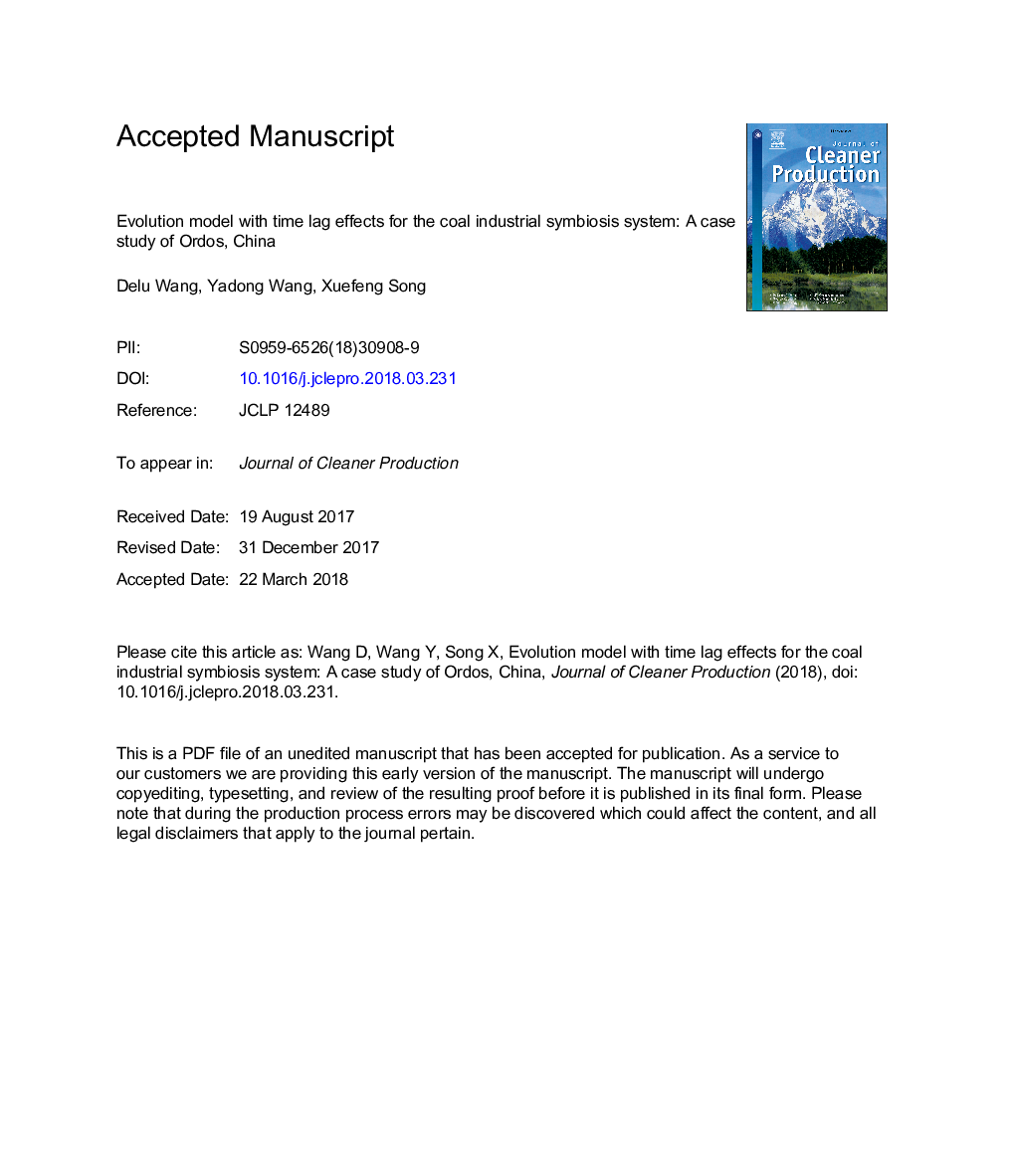| Article ID | Journal | Published Year | Pages | File Type |
|---|---|---|---|---|
| 8096017 | Journal of Cleaner Production | 2018 | 31 Pages |
Abstract
Industrial metabolism and symbiotic coupling has become the base paradigm of green, low-carbon development of coal mining. In the coal industrial symbiosis system (CISS), stability is increasingly fragile because of its unique industrial links and growth environment. Referring to the classic Lotka-Volterra population ecology model, and synthesizing the periodicity and time lag effects of industrial development, two entirely novel and more generalized CISS evolution models with time lag effects in the competitive and reciprocal scenarios are constructed respectively. Moreover, the conditions of CISS stability are proven and discussed through mathematical analysis. Simulation and theorem validation were carried out by taking the largest Chinese coal city, Ordos, as the research object. The main results are as follows. First, the time lag effect is an important factor leading to CISS instability. The shorter the time lag within the CISS, the better the collaboration between industries, and the easier it is that the CISS will achieve a stable ecological balance. Second, when the power of competition dominates, the development of industries within CISS will be inhibited; when the power of cooperation dominates, the evolution of CISS will toward a positive direction. Third, a certain degree of self-inhibition will contribute to the stable development of the industrial symbiosis system. At last, the social service industry not only can boost the industrial diversity within CISS, but also can promote the co-evolution of original and exogenous industries, which plays a positive role in the healthy and stable development of CISS.
Keywords
Related Topics
Physical Sciences and Engineering
Energy
Renewable Energy, Sustainability and the Environment
Authors
Delu Wang, Yadong Wang, Xuefeng Song,
